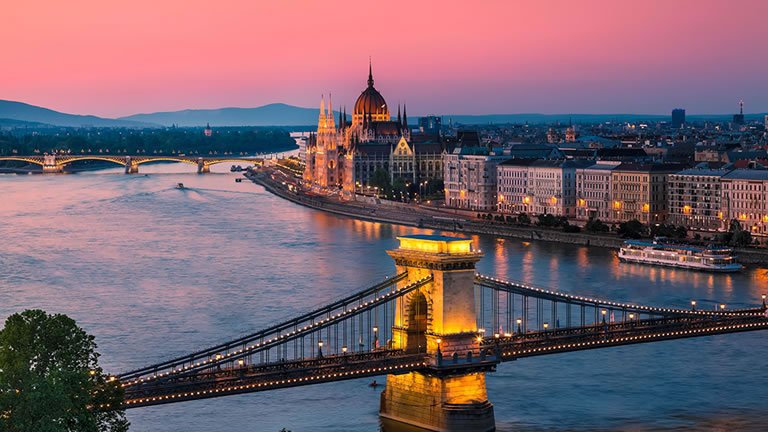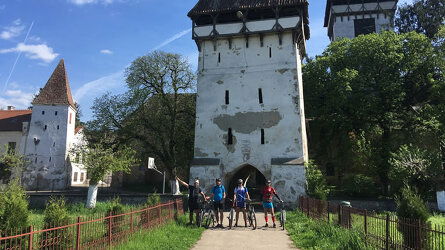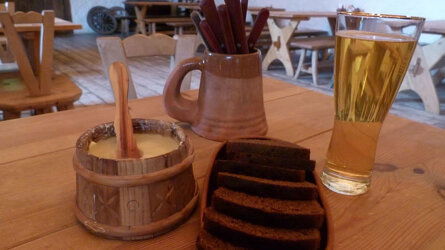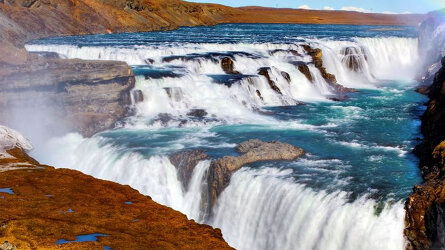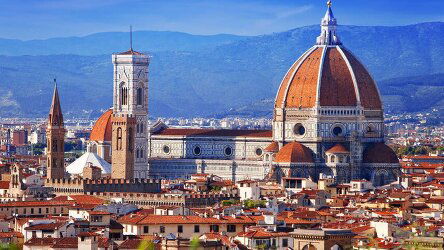Overview
Itinerary
Arrive in Krakow, where we spend the next two nights. It was Poland's former capital until 1596 and due to its very distinctive character; it is on the UNESCO World Heritage list. Its historic architecture survived World War II unscathed, unlike most other Polish cities, and its rich culture has been preserved to the present day. It was the residence of Polish kings and has nearly one hundred churches, as well as the country's oldest university. Among its most important architectural treasures are Saint Mary's Church, which contains the world-famous altarpiece carved by Veit Stoss, the medieval buildings of the Jagiellonian University and Wawel Castle and Cathedral.
For those arriving on time our Leader plans to meet you in the hotel reception at 6pm for the welcome meeting and for those that wish, there is the chance to go out for dinner. There are no other activities planned today, so you are free to arrive in Krakow at any time. If you would like an airport transfer today, you'll need to arrive into John Paul II Krakow-Balice International Airport (KRK), which is around 30 minutes' drive. Should you miss the welcome meeting, your Leader will inform you of any essential information as soon as you catch up.
There is a lot to see and do in Krakow; if you can spare the time, we suggest arriving a day early to make the most of this fascinating city especially if you are going on the optional excursion to Auschwitz or Wieliczka Salt Mine tomorrow. Alternatively, you could consider combining this holiday with the Budapest to Prague Adventure (explore.co.uk/CZ) to make a two-week holiday.
In the city centre you will find numerous good Polish restaurants and the 'pierogi', Polish dumplings, are especially tasty. There are also many bars selling a range of local beers and of course a wide range of vodkas. Such as Chmiel, which is a basement bar beneath the forecourt of Wawel Castle, C.K. Browar, which is a popular micro-brewery or Starka Restaurant and Vodkas where you can try out an array of homemade flavoured vodkas. Stay: Hotel Wyspianski (Comfortable)
This morning our local Leader will take us on a short orientation walk around the city's stunning Old Quarter to help us get our bearings.
The rest of today is left free for you to explore Krakow and further afield if you wish. The Jewish Kazimierz district, the setting for the film Schindler's List, has many points of interest, including the Old Synagogue and the Museum of Jewish Life. You may like to make an excursion to Oswiecim, the site of the Auschwitz-Birkenau Concentration Camp, which is a haunting reminder of the terrible atrocities that took place here during World War II.
Alternatively it's possible to visit the Royal Castle, perched high on Wawel Hill, which overlooks both the Old Quarter and the Vistula River. Constructed in Renaissance style, the castle houses exquisite treasures collected through the ages by Polish monarchs. Next to the castle is Wawel Cathedral, which is the final resting place of the Polish Kings.
Another option is to visit the fascinating Wieliczka Salt Mines, which is a UNESCO World Heritage Site. At up to 300 metres underground you'll see a 400 year old chapel, a subterranean salt lake and chambers large enough to hold the Eiffel Tower! The Chapel of Saint Kinga is the mine's most spectacular feature and you'll no doubt be amazed by what can be sculpted from salt. Please note that there are 350 steps down into the mine at the beginning of the tour and then a further 450 on the route through the various corridors and 20 chambers visited. The temperature underground can be much cooler than on the surface, so be sure to bring a jumper.
There is only time to visit Auschwitz or the Wieliczka salt mine today. We suggest you extend your stay in Krakow if you would like to visit both. Please see the Optional Activities section of our trip notes about pre-booking the optional excursion to Auschwitz prior to travel. This excursion books up quickly so it is important to book this at least one week in advance of your arrival. Stay: Hotel Wyspianski (Comfortable) (B)
This morning we depart for an inflatable rafting trip on the Dunajec River to a point close to the Polish border near Lesnica. It's a chance to get active and probably get wet as well as enjoying the picturesque surroundings. Bring a change of clothes and shoes that you don't mind getting wet and a towel with you today. This river has been a famous attraction since the middle of the 19th century, when tourists came here to cruise on log built rafts. We meander along the bottom of the spectacular canyon that bears the river's name, passing a landscape of towering limestone cliffs, blanketed in lush forests of fir, beech, larch and spruce.
The gorge in Pieniny National Park is particularly noteworthy for its diverse collection of wildlife including lynx, wolf and stag that can often be spotted in its slopes. Birdlife includes some 14 species of bats as well as eagle, pygmy owls, three toed woodpeckers and rare black storks that can be spotted along the river's edge.
Later in the day, will visit the impressive Spis Castle. Sat on a hilltop above the town of Spisske it was once home to the Hungarian kings and it is now a UNESCO World Heritage Site and the ruins show both Romanesque and Gothic architecture.
Continue by bus to Tatranska Lomnica in the High Tatra Mountains, one of the most scenic regions of Slovakia. Snow-capped for most of the year, the compact High Tatra range is sliced by beautiful valleys and lakes. An ideal region for winter sports, in summer the network of well-marked trails is a hiker's delight. Stay: Hotel Titris (Comfortable) (B)
Today we take a public bus to Biela Voda and from here we'll start our full day trek in the beautiful Tatra Mountains. We begin with an uphill walk to the picturesque Green Lake. We take in the views and have the option to have a picnic lunch here. For those that wish to walk further there is then the possibility to continue to the Great White Lake before returning to Biela Voda on foot. We return to Tatranska Lomnica by public bus for the evening.
The trek is graded moderate. The first section is 5 kilometres long and goes from 915 metres to an altitude of 1550 metres and should take approximately 2.5 hours. If you continue to the Great White Lake it's a further 2 kilometres and goes to an altitude of 1615 metres and should take an extra 35 minutes. We then need to walk the same distance back to the original starting point of the walk, so we will cover between 10-14 kilometres and walk for 5-6 hours in total today. Please make sure you bring comfortable walking shoes or boots and you may also find walking poles useful.
Alternatively if you'd prefer a shorter walk then you can take a local train to Lake Strbske and enjoy a gentle walk around the lakeshore. This large glacial lake offers great views over the surrounding valleys and lakes. An ideal region for winter sports, in summer the network of well-marked trails is a hiker's delight. Stay: Hotel Titris (Comfortable) (B)
This morning we travel by private bus to Banska Bystrica. We will make a stop at Vlkolinec Unesco village. On arrival to Banska Bystrica our local Leader will take us on an orientation walk of the city. The pretty town is set on the Hron River and is surrounded by mountains. The main square is a hive of activity in summer and the city castle, which is one of the main attractions, is located on the edge of the square. Back in 1944 it was in Banska Bystrica that the Slovak national uprising began against the invading German forces and their own collaborationist government. Although most were defeated a few members managed to hold on until 1945 when the Soviet, Czechoslovakian and Romanian armies arrived and liberated the country from Nazi rule.
Whilst here you might like to try the traditional and delicious folded potato pancakes followed by 'Tatratea' liqueur, a tea based strong herbal drink that originated in the High Tatra Mountains as a way of keeping warm on cold winter evenings. Stay: Pension Grand (Comfortable) (B)
We start our day visiting the unique Hronsek wooden church, a remarkable engineering accomplishment, given the vast wooden building contains not a single nail or supporting metal in its construction. This beautiful building is protected by UNESCO and has capacity to seat a congregation of over 1000.
Our next stop is Banska Stiavnica, a beautifully preserved medieval town located in the centre of a huge caldera of an ancient collapsed volcano, surrounded by dense forested hills. Whilst here we will visit the 17th century open air mining museum. Equipped with a helmet, mining coat and lamp we head 60 meters deep underground to traverse a two kilometre tunnel providing a fascinating insight into the hard work of mining community from the middle ages until the end of the 20th century.
We continue our journey to Stará Hora, a picturesque small wine-making district of Sebechleby village, on the southern foothills of the Stiavnica Mountains sprinkled with small wine houses called "hajlochy." After a short walk around the village there is the option to visit a local wine cellar and enjoy some wine and dinner prepared by a local family, this is an optional activity - see the budgeting section for more details. Our final destination is Budapest, a two hour drive. Stay: Roombach Hotel, Budapest Center (Comfortable) (B)
Situated on a beautiful stretch of the Danube River, Hungary's capital consists of two parts: Buda and Pest. Buda is the older, more graceful part, with cobbled streets and medieval buildings, whilst the latter is the modern business centre.
Utilising local transport, this morning's guided walking tour takes in the major sites of this impressive city. Discover the Basilica of Saint Stephen and the Parliament buildings before crossing the Chain Bridge to the Castle District and Watertown. Here lie Buda's most ancient gems- Castle Hill with the Old Town, Fisherman's Bastion and the Royal Palace.
The afternoon is left free for your own exploration of Budapest with its many attractions. You may like to relax in one of the famous historic thermal baths, fed by natural hot springs or take a boat cruise on the Danube. Another recommended attraction is Szentendre; an artist's town with a Serb minority located on the bank of the river, which can be reached by train or bus. Stay: Roombach Hotel, Budapest Center (Comfortable) (B)
Trip ends at our hotel in Budapest after breakfast.
There are no activities planned today, so you are free to depart from Budapest at any time. If your flight is departing later in the day luggage storage facilities are available at our hotel. If you would like an airport transfer today, you need to depart from Budapest Ferenc Liszt International Airport (BUD), which is around 40 minutes' drive from the airport.
If you have chosen to join our Budapest to Prague trip then today is free for you to further explore Budapest's many attractions. You may like to visit one of the city's famous thermal baths or take a boat cruise on the Danube River. Another recommended attraction is Szentendre; an artist's town with a Serb minority located on the bank of the river, which can be reached by train or bus. (B)
Arrive in Krakow, where we spend the next two nights. It was Poland's former capital until 1596 and due to its very distinctive character; it is on the UNESCO World Heritage list. Its historic architecture survived World War II unscathed, unlike most other Polish cities, and its rich culture has been preserved to the present day. It was the residence of Polish kings and has nearly one hundred churches, as well as the country's oldest university. Among its most important architectural treasures are Saint Mary's Church, which contains the world-famous altarpiece carved by Veit Stoss, the medieval buildings of the Jagiellonian University and Wawel Castle and Cathedral.
For those arriving on time our Leader plans to meet you in the hotel reception at 6pm for the welcome meeting and for those that wish, there is the chance to go out for dinner. There are no other activities planned today, so you are free to arrive in Krakow at any time. If you would like an airport transfer today, you'll need to arrive into John Paul II Krakow-Balice International Airport (KRK), which is around 30 minutes' drive. Should you miss the welcome meeting, your Leader will inform you of any essential information as soon as you catch up.
There is a lot to see and do in Krakow; if you can spare the time, we suggest arriving a day early to make the most of this fascinating city especially if you are going on the optional excursion to Auschwitz or Wieliczka Salt Mine tomorrow. Alternatively, you could consider combining this holiday with the Budapest to Prague Adventure (explore.co.uk/CZ) to make a two-week holiday.
In the city centre you will find numerous good Polish restaurants and the 'pierogi', Polish dumplings, are especially tasty. There are also many bars selling a range of local beers and of course a wide range of vodkas. Such as Chmiel, which is a basement bar beneath the forecourt of Wawel Castle, C.K. Browar, which is a popular micro-brewery or Starka Restaurant and Vodkas where you can try out an array of homemade flavoured vodkas. Stay: Hotel Wyspianski (Comfortable)
This morning our local Leader will take us on a short orientation walk around the city's stunning Old Quarter to help us get our bearings.
The rest of today is left free for you to explore Krakow and further afield if you wish. The Jewish Kazimierz district, the setting for the film Schindler's List, has many points of interest, including the Old Synagogue and the Museum of Jewish Life. You may like to make an excursion to Oswiecim, the site of the Auschwitz-Birkenau Concentration Camp, which is a haunting reminder of the terrible atrocities that took place here during World War II.
Alternatively it's possible to visit the Royal Castle, perched high on Wawel Hill, which overlooks both the Old Quarter and the Vistula River. Constructed in Renaissance style, the castle houses exquisite treasures collected through the ages by Polish monarchs. Next to the castle is Wawel Cathedral, which is the final resting place of the Polish Kings.
Another option is to visit the fascinating Wieliczka Salt Mines, which is a UNESCO World Heritage Site. At up to 300 metres underground you'll see a 400 year old chapel, a subterranean salt lake and chambers large enough to hold the Eiffel Tower! The Chapel of Saint Kinga is the mine's most spectacular feature and you'll no doubt be amazed by what can be sculpted from salt. Please note that there are 350 steps down into the mine at the beginning of the tour and then a further 450 on the route through the various corridors and 20 chambers visited. The temperature underground can be much cooler than on the surface, so be sure to bring a jumper.
There is only time to visit Auschwitz or the Wieliczka salt mine today. We suggest you extend your stay in Krakow if you would like to visit both. Please see the Optional Activities section of our trip notes about pre-booking the optional excursion to Auschwitz prior to travel. This excursion books up quickly so it is important to book this at least one week in advance of your arrival. Stay: Hotel Wyspianski (Comfortable) (B)
This morning we depart for an inflatable rafting trip on the Dunajec River to a point close to the Polish border near Lesnica. It's a chance to get active and probably get wet as well as enjoying the picturesque surroundings. Bring a change of clothes and shoes that you don't mind getting wet and a towel with you today. This river has been a famous attraction since the middle of the 19th century, when tourists came here to cruise on log built rafts. We meander along the bottom of the spectacular canyon that bears the river's name, passing a landscape of towering limestone cliffs, blanketed in lush forests of fir, beech, larch and spruce.
The gorge in Pieniny National Park is particularly noteworthy for its diverse collection of wildlife including lynx, wolf and stag that can often be spotted in its slopes. Birdlife includes some 14 species of bats as well as eagle, pygmy owls, three toed woodpeckers and rare black storks that can be spotted along the river's edge.
Later in the day, will visit the impressive Spis Castle. Sat on a hilltop above the town of Spisske it was once home to the Hungarian kings and it is now a UNESCO World Heritage Site and the ruins show both Romanesque and Gothic architecture.
Continue by bus to Tatranska Lomnica in the High Tatra Mountains, one of the most scenic regions of Slovakia. Snow-capped for most of the year, the compact High Tatra range is sliced by beautiful valleys and lakes. An ideal region for winter sports, in summer the network of well-marked trails is a hiker's delight. Stay: Hotel Titris (Comfortable) (B)
Today we take a public bus to Biela Voda and from here we'll start our full day trek in the beautiful Tatra Mountains. We begin with an uphill walk to the picturesque Green Lake. We take in the views and have the option to have a picnic lunch here. For those that wish to walk further there is then the possibility to continue to the Great White Lake before returning to Biela Voda on foot. We return to Tatranska Lomnica by public bus for the evening.
The trek is graded moderate. The first section is 5 kilometres long and goes from 915 metres to an altitude of 1550 metres and should take approximately 2.5 hours. If you continue to the Great White Lake it's a further 2 kilometres and goes to an altitude of 1615 metres and should take an extra 35 minutes. We then need to walk the same distance back to the original starting point of the walk, so we will cover between 10-14 kilometres and walk for 5-6 hours in total today. Please make sure you bring comfortable walking shoes or boots and you may also find walking poles useful.
Alternatively if you'd prefer a shorter walk then you can take a local train to Lake Strbske and enjoy a gentle walk around the lakeshore. This large glacial lake offers great views over the surrounding valleys and lakes. An ideal region for winter sports, in summer the network of well-marked trails is a hiker's delight. Stay: Hotel Titris (Comfortable) (B)
This morning we travel by private bus to Banska Bystrica. We will make a stop at Vlkolinec Unesco village. On arrival to Banska Bystrica our local Leader will take us on an orientation walk of the city. The pretty town is set on the Hron River and is surrounded by mountains. The main square is a hive of activity in summer and the city castle, which is one of the main attractions, is located on the edge of the square. Back in 1944 it was in Banska Bystrica that the Slovak national uprising began against the invading German forces and their own collaborationist government. Although most were defeated a few members managed to hold on until 1945 when the Soviet, Czechoslovakian and Romanian armies arrived and liberated the country from Nazi rule.
Whilst here you might like to try the traditional and delicious folded potato pancakes followed by 'Tatratea' liqueur, a tea based strong herbal drink that originated in the High Tatra Mountains as a way of keeping warm on cold winter evenings. Stay: Pension Grand (Comfortable) (B)
We start our day visiting the unique Hronsek wooden church, a remarkable engineering accomplishment, given the vast wooden building contains not a single nail or supporting metal in its construction. This beautiful building is protected by UNESCO and has capacity to seat a congregation of over 1000.
Our next stop is Banska Stiavnica, a beautifully preserved medieval town located in the centre of a huge caldera of an ancient collapsed volcano, surrounded by dense forested hills. Whilst here we will visit the 17th century open air mining museum. Equipped with a helmet, mining coat and lamp we head 60 meters deep underground to traverse a two kilometre tunnel providing a fascinating insight into the hard work of mining community from the middle ages until the end of the 20th century.
We continue our journey to Stará Hora, a picturesque small wine-making district of Sebechleby village, on the southern foothills of the Stiavnica Mountains sprinkled with small wine houses called "hajlochy." After a short walk around the village there is the option to visit a local wine cellar and enjoy some wine and dinner prepared by a local family, this is an optional activity - see the budgeting section for more details. Our final destination is Budapest, a two hour drive. Stay: Roombach Hotel, Budapest Center (Comfortable) (B)
Situated on a beautiful stretch of the Danube River, Hungary's capital consists of two parts: Buda and Pest. Buda is the older, more graceful part, with cobbled streets and medieval buildings, whilst the latter is the modern business centre.
Utilising local transport, this morning's guided walking tour takes in the major sites of this impressive city. Discover the Basilica of Saint Stephen and the Parliament buildings before crossing the Chain Bridge to the Castle District and Watertown. Here lie Buda's most ancient gems- Castle Hill with the Old Town, Fisherman's Bastion and the Royal Palace.
The afternoon is left free for your own exploration of Budapest with its many attractions. You may like to relax in one of the famous historic thermal baths, fed by natural hot springs or take a boat cruise on the Danube. Another recommended attraction is Szentendre; an artist's town with a Serb minority located on the bank of the river, which can be reached by train or bus. Stay: Roombach Hotel, Budapest Center (Comfortable) (B)
Trip ends at our hotel in Budapest after breakfast.
There are no activities planned today, so you are free to depart from Budapest at any time. If your flight is departing later in the day luggage storage facilities are available at our hotel. If you would like an airport transfer today, you need to depart from Budapest Ferenc Liszt International Airport (BUD), which is around 40 minutes' drive from the airport.
If you have chosen to join our Budapest to Prague trip then today is free for you to further explore Budapest's many attractions. You may like to visit one of the city's famous thermal baths or take a boat cruise on the Danube River. Another recommended attraction is Szentendre; an artist's town with a Serb minority located on the bank of the river, which can be reached by train or bus. (B)
Trip Inclusions
- Explore the maze of streets in the medieval cities of Krakow and Budapest
- Raft along the Dunajec River Gorge and go walking in the Tatra Mountains
- Discover the medieval town of Banska Stiavnica and learn of its fascinating mining history
- Full on paced trips are for travellers who like their holidays packed with activities and experiences, moving on quickly from place to place with lots of early starts and long, busy days. Some may find them tiring, but others get a buzz from packing their precious holiday-time as chock-a - block full of new experiences as possible.
- Accommodation, itinerary and inclusions subject to change.
- Price is for land, cruise and internal flights as specified. Flights not specified are not included
- Explore the maze of streets in the medieval cities of Krakow and Budapest
- Raft along the Dunajec River Gorge and go walking in the Tatra Mountains
- Discover the medieval town of Banska Stiavnica and learn of its fascinating mining history
- Full on paced trips are for travellers who like their holidays packed with activities and experiences, moving on quickly from place to place with lots of early starts and long, busy days. Some may find them tiring, but others get a buzz from packing their precious holiday-time as chock-a - block full of new experiences as possible.
- Accommodation, itinerary and inclusions subject to change.
- Price is for land, cruise and internal flights as specified. Flights not specified are not included
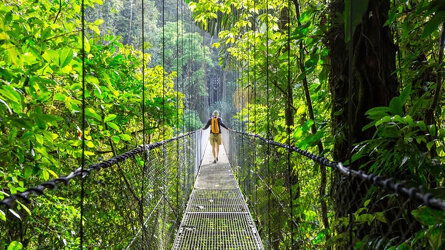
Launching in 1981, Explore offer trips from over 130 countries - from classic small group tours. Read more
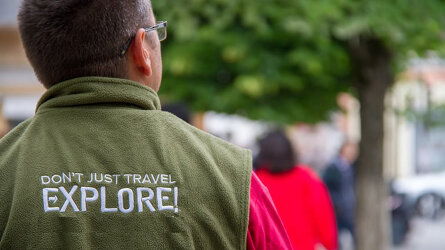
Explore's leaders are more than just your typical guide. They're your local expert are are passionate about sharing their expertise with you. Read more
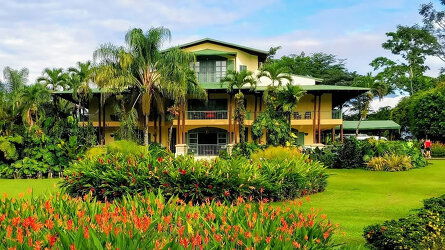
The places Explore stay are every bit as important as the sights they visit and the things you do. Read more

Launching in 1981, Explore offer trips from over 130 countries - from classic small group tours. Read more

Explore's leaders are more than just your typical guide. They're your local expert are are passionate about sharing their expertise with you. Read more

The places Explore stay are every bit as important as the sights they visit and the things you do. Read more
Brochure
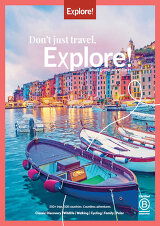
Explore Small Group Adventures (2025-26)
Brochure

Explore Small Group Adventures (2025-26)
Availability
 USD
USD
A definite departure means minimum numbers have been reached for this departure to operate. Your Global Journeys Travel Advisor will check the availability of your departure date when you enquire. Additional savings may apply. We guarantee the lowest price in USA. T&C’s apply.
Tour & cruises prices are per person. Prices shown have savings applied, are subject to availability and may be withdrawn at any time without notice. Pricing and trip details are correct at this point in time, however are subject to confirmation at the time of booking and are subject to change by Explore. For cruise itineraries, cabin images are sourced from Explore. These should be treated as indicative only. Cabin inclusions, upholsteries and room layout may differ to the image(s) shown depending on the ship selected and your sailing dates.
